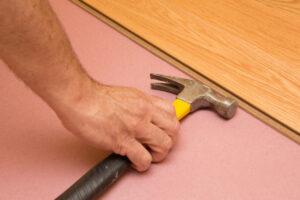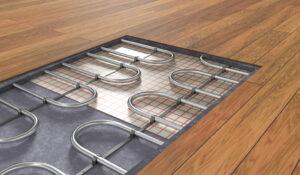Our Picks For Best Texas Desert Flooring Solutions
Looking for the best flooring for Texas desert conditions? You’ve come to the right place. We’re going to explain some of the things you need to know about the Texas climate and how it can affect your flooring material choices.
Everyone loves carpeting, but . . .
A lot of Texas is dry, hot, and windy. And some of the parts that aren’t can be muddy. Carpeting is comfortable underfoot, and there’s a wide variety of colors available, but carpets collect a lot of dust and sand.
In fact, you would be astonished how much fine sand works its way into the carpet fibers. You won’t see it because it’s hidden in the carpet pile. Even worse, fine particles migrate through the carpet, through the under pad, and settle on the subfloor. If you’ve ever seen a carpet being removed from a home in the dry environment of Texas, you know what we’re talking about.

Even if your family members are careful when walking into your home’s entryway from outside, the dry, windy conditions will blow in. You can vacuum all you want, but even commercial carpet vacuums have trouble pulling out the dust. Some machines with vibration bars don’t get all the dust out.
Solid hardwood flooring vs. engineered hardwood flooring
If you’re a purist and you have the money, solid hardwood flooring is an excellent choice. They enhance the beauty and value of your home, especially if you upgrade the floor in your entire house. There are some factors to consider when choosing solid hardwood flooring.
Dry air can make installing floors a bit tricky. It’s the same with areas wherein the conditions vary. The cycling between higher and lower humidity levels both in the home and outside increases the degree the wood will expand and contract. Warping and cracking of wood flooring can result.
Successful installations of a floor in a dry environment like Texas necessitate proper acclimation before the first plank is laid down.
Engineered hardwood flooring is designed to prevent moving, warping, and cracking. Both the materials and the construction methods of intersecting layers can give you all of the warmth and feel of solid hardwood while minimizing the risks of using a natural product. Engineered hardwood flooring is renowned for its stability in dry climates and extreme conditions.
Engineered hardwood flooring is available in a wonderful spectrum of stain colors, finish sheens, hardwood species, and dimensions. Some of them also give you the hand-scraped detailing that is becoming so popular.

Laminate flooring and vinyl flooring are a smart choice
Both types of flooring have made significant advances in the last few years. They are definitely not the same as you may remember. It’s difficult to tell the difference between these and their natural wood cousins. Both are incredibly tough, water-resistant, and suitable for high traffic areas that would cause trouble for solid hardwood floors.
One of their best features is how easy to install these floors are. There is a variety of installation methods, and even DIYers can handle the job.
Here are some of the laminate flooring and vinyl flooring available:
LVT (Luxury Vinyl Tile) and LVP (Luxury Vinyl Planks) come in a variety of textures and shades. Some of them are flexible, and some are made to be stiff. Some are peel and stick, and others click together to form a fully floating floor.
Laminate wood flooring comes in varying thicknesses measuring 6mm to 12mm. The greater the thickness, the better the impact absorption. Laminate floor planks and laminate floor tiles can give you the look of your favorite hardwood without the cost. One of the reasons these floors are enjoying tremendous popularity is the fact that you can also choose laminate flooring to mimic the look of stone or ceramic tiles.
Years ago, it was easy to tell if you were walking on a vinyl floor or laminate floor because of the sound. Now choices on the upper end of the scale include sound deadening technology and materials built into the flooring itself. Both these types of flooring do not require an acoustic underlayment, although in some cases, both luxury vinyl tile and luxury vinyl plank flooring be used in conjunction with acoustic floor underlayments.
Have you thought of radiant heating?

Energy efficiency is becoming more important every year. One of the smartest choices can be radiant heating. Whether you’re installing a new floor in a bathroom or your entire house, the gentle warmth they provide and the energy saving is definitely worth looking into.
There are several types of radiant heating. There are air-heated radiant floors that circulate hot air under the floor. Electric radiant floors are made up of electric heating cables that are laid underneath the finished floor of your choice.
Hydronic radiant systems use liquids like water that travels through tubes that are laid underneath the floor. Each one has its pros and cons.
Ask the experts at your local store! We love big box stores but not when it comes to choosing a floor for the unforgiving Texas climate.
Instead, search for a long-standing flooring retailer near you. They will know the area well. They will be familiar with the type of construction used to make your home. And they know what works best where you live.

Do your own research first
For those of you who are interested in knowing a little bit more about the subject of flooring in Texas, we’ve prepared a few links you can investigate:
The effect of moisture on different hardwoods
Why hardwood flooring is best for high-end retail stores


